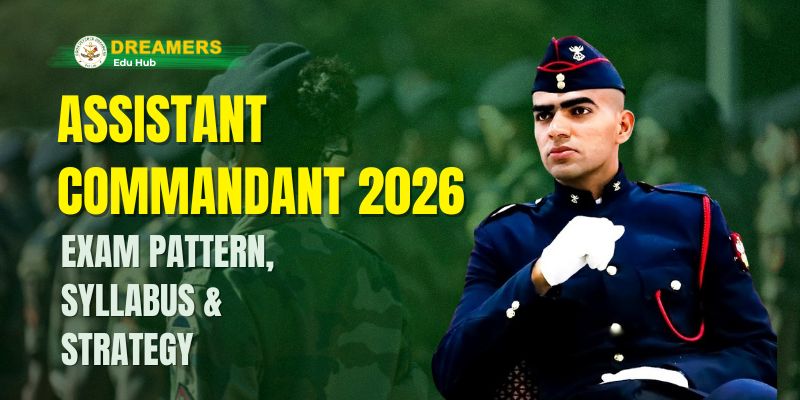Introduction
The National Defence Academy (NDA) is not just about clearing a written exam; it is about preparing yourself to face one of the most disciplined and demanding careers in the world. While many aspirants focus heavily on academics, they often forget that the physical fitness test and overall endurance are equally important.
Physical fitness is not only tested during the SSB interview and medical examination but also forms the foundation of life at the NDA. Cadets undergo rigorous military training that requires strength, stamina, agility, and mental toughness. Without good physical health, even the brightest candidate may struggle to cope with the demands of academy life.
In this article, we will discuss why physical fitness is so crucial for NDA aspirants, what standards are expected, and how to prepare for them effectively.
Why Physical Fitness Matters for NDA Aspirants
1. Part of the Selection Process
After clearing the NDA written exam, candidates face the SSB (Services Selection Board).
Physical tasks such as obstacle courses, group activities, and running are a core part of the assessment.
If you are not fit, it becomes difficult to showcase your Officer-Like Qualities (OLQs).
2. Medical Standards
Candidates undergo a thorough medical check-up.
Height, weight, eyesight, hearing, and overall stamina are carefully assessed.
Failure to meet standards can lead to rejection even after passing the written and SSB.
3. Life at NDA
NDA cadets start their day early with physical drills, running, and obstacle training.
Sports, swimming, horse riding, and weapon training demand high energy levels.
Only those with consistent physical fitness can adapt to academy life.
4. Confidence and Personality
Good fitness improves posture, confidence, and leadership presence.
During SSB group tasks, a fit candidate naturally emerges as a leader.
NDA Physical Standards
The Indian Armed Forces have set strict standards that every NDA aspirant must meet.
Height: Minimum 157 cm (relaxation for hilly/tribal regions).
Weight: Should be proportional to height and age.
Vision:
6/6 in one eye, 6/9 in the other (correctable).
Color blindness or night blindness is not acceptable.
Hearing: Normal.
Chest: Should be well developed, minimum expansion 5 cm.
Tip: Start maintaining fitness early to meet these requirements without last-minute struggle.
Key Areas of Fitness to Focus On
1. Running and Stamina
Running is the backbone of NDA fitness. Cadets are expected to complete 2.4 km in 10–12 minutes.
Practice long-distance runs (3–5 km daily).
Include sprinting drills to improve speed.
Build stamina gradually instead of rushing.
2. Strength Training
The NDA lifestyle demands a strong body.
Push-ups: Target at least 40–50 in one go.
Pull-ups: Aim for 10–12 clean pull-ups.
Squats: 60–70 squats build lower body strength.
3. Core Training
A strong core is important for balance and endurance.
Planks, sit-ups, crunches, and mountain climbers should be part of daily workouts.
4. Flexibility and Agility
Obstacle courses test balance and agility.
Practice skipping, shuttle runs, yoga, and stretching exercises.
Focus on shoulder and hip flexibility.
5. Swimming and Sports
NDA training includes swimming and team sports.
Learn swimming basics before SSB.
Play outdoor sports like football, basketball, or hockey to improve reflexes and teamwork.
Nutrition for NDA Aspirants
Fitness is incomplete without the right diet.
Proteins: Eggs, chicken, fish, paneer, lentils for muscle strength.
Carbohydrates: Brown rice, oats, and whole wheat for energy.
Fruits & Vegetables: For vitamins, minerals, and hydration.
Hydration: Drink 3–4 liters of water daily.
Avoid junk food, soft drinks, and overeating. A balanced diet fuels both body and brain.
Lifestyle Habits for Defence Fitness
Discipline: Fix a daily routine like NDA cadets (early wake-up, regular workouts).
Sleep: Minimum 7–8 hours for recovery.
Mental Fitness: Meditation or yoga improves focus and stress control.
Avoid Bad Habits: Stay away from smoking, alcohol, or anything that affects stamina.
Weekly Sample Fitness Routine for NDA Aspirants
Day 1: Long-distance run + push-ups + planks.
Day 2: Sprint intervals + pull-ups + squats.
Day 3: Sports (football/hockey) + stretching.
Day 4: Long-distance run + sit-ups + mountain climbers.
Day 5: Rope climbing + agility drills.
Day 6: Swimming or cycling.
Day 7: Rest or light yoga.
Doon Defence Dreamers: Helping Aspirants Build Physical and Mental Strength
Academic knowledge alone is not enough for NDA success. Institutes like Doon Defence Dreamers, one of the top NDA coaching centres in Dehradun, train students for both academics and physical fitness.
Regular PT sessions, runs, and obstacle training.
Expert guidance on diet, stamina-building, and endurance training.
Mock physical tests to help students measure their progress.
Foundation programs for younger aspirants (RIMC, Sainik School) to build fitness from an early age.
By combining classroom teaching with physical and personality training, Doon Defence Dreamers prepares students holistically for NDA.
Conclusion
The NDA is not just an exam; it is the gateway to a challenging and rewarding military career. To succeed, aspirants must balance academic preparation and physical fitness. While books prepare you for the written test, fitness prepares you for the real life of a cadet and officer.
Running, strength training, flexibility, swimming, and a healthy lifestyle are key components of NDA fitness. The earlier you start, the better prepared you will be.
With proper guidance from experienced institutes like Doon Defence Dreamers, aspirants can build the perfect combination of knowledge, stamina, and confidence — qualities that define a true leader in the Indian Armed Forces.




























